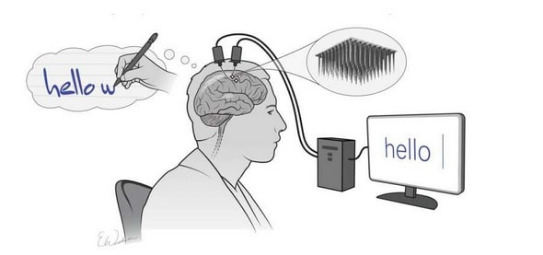Scientists are exploring a number of ways for people with disabilities to communicate with their thoughts. The newest and fastest turns back to a vintage means for expressing oneself: handwriting.
For the first time, researchers have deciphered the brain activity associated with trying to write letters by hand. Working with a participant with paralysis who has sensors implanted in his brain, the team used an algorithm to identify letters as he attempted to write them. Then, the system displayed the text on a screen—in real time.
The innovation could, with further development, let people with paralysis rapidly type without using their hands, says study coauthor Krishna Shenoy, a Howard Hughes Medical Institute Investigator at Stanford University who jointly supervised the work with Jaimie Henderson, a Stanford neurosurgeon.
By attempting handwriting, the study participant typed 90 characters per minute—more than double the previous record for typing with such a “brain-computer interface,” Shenoy and his colleagues report in the journal Nature on May 12, 2021.
This technology and others like it have the potential to help people with all sorts of disabilities, says Jose Carmena, a neural engineer at the University of California, Berkeley, who was not involved in the study. Though the findings are preliminary, he says, “it’s a big advancement in the field.”
Brain-computer interfaces convert thought into action, Carmena says. “This paper is a perfect example: the interface decodes the thought of writing and produces the action.”
READ more: Brain computer interface turns mental handwriting into text on screen
